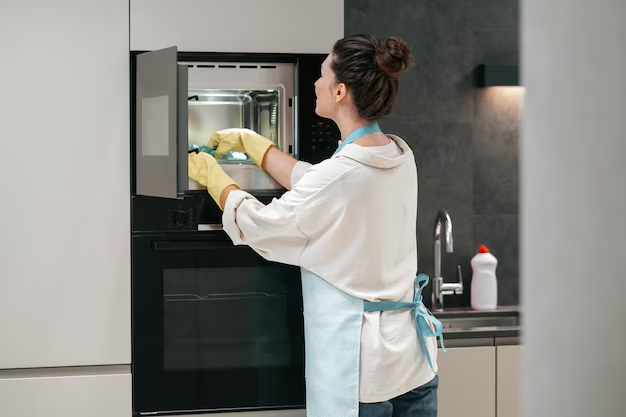The Ultimate Guide to Connecting Your Refrigerator Ice Maker
Installing an ice maker in your refrigerator can transform your kitchen experience, adding convenience and a steady supply of ice at your fingertips. However, the process of connecting an ice maker can seem daunting if you haven’t done it before. Don't worry—this article is here to guide you through every step of the process, making it as straightforward and hassle-free as possible. Let's dive into the nitty-gritty of setting up your refrigerator ice maker successfully.
Understanding the Basics of Refrigerator Ice Makers
What is a Refrigerator Ice Maker?
An ice maker is a convenient appliance feature found within many modern refrigerators. It automates the production of ice without the need for traditional ice trays. This not only saves time but ensures you always have enough ice on hand for drinks, parties, or everyday use.
Key Components
Before you start, it’s essential to understand the key components involved:
- Water Supply Line: Connects to your home's water supply to deliver water to the ice maker.
- Shut-Off Valve: Allows you to control the flow of water to the ice maker.
- Fill Tube: Directs water into the ice maker.
- Control Module: Manages the ice maker's operations, determining when to fill and harvest the ice.
Preparing for Installation
Assess Your Kitchen Layout
Before starting the installation, assess your kitchen layout to determine the best way to connect the water supply. Key factors to consider include:
- Proximity to Water Supply: The closer your refrigerator is to a water supply, the easier the installation.
- Space for Lines and Valves: Ensure there's adequate space behind your refrigerator for the water line and shut-off valve.
Gather the Necessary Tools and Materials
For a smooth installation, you will need:
- Drill and Drill Bits: For making holes if necessary.
- Adjustable Wrench: To tighten connections.
- Screwdriver: For installing the bracket.
- Copper or Plastic Tubing: To serve as the water line.
- Teflon Tape: To seal any connections.
- Saddle Valve: Helps create a connection point on a water line.
Safety First
Ensure safety by:
- Turning off the water supply before starting the installation.
- Unplugging the refrigerator to prevent any electrical hazards.
Step-by-Step Guide to Connecting Your Ice Maker
Step 1: Install the Water Line
Locate the Nearest Cold Water Source: This is often underneath the kitchen sink or another convenient spot.
Install the Saddle Valve:
- Attach the saddle valve to the cold water pipe.
- Ensure it's tightly secured and positioned correctly.
Connect the Tubing:
- Attach one end of the copper or plastic tubing to the valve.
- Use Teflon tape to ensure a secure and leak-proof seal.
Step 2: Prepare the Refrigerator
Locate the Water Inlet Valve: Usually located at the back of the refrigerator.
Secure the Tubing to the Refrigerator:
- Attach the other end of the tubing to the refrigerator's water inlet valve.
- Again, use Teflon tape to ensure a secure connection.
Step 3: Position the Refrigerator
- Move the Refrigerator Back into Place: Once everything is connected, carefully push the refrigerator back into its position, ensuring there are no kinks in the tubing.
Step 4: Test the Ice Maker
Turn on the Water Supply: Open the saddle valve to allow water to flow into the ice maker.
Plug in the Refrigerator: Restore power to the refrigerator.
Test for Leaks: Check all connections for any signs of leakage and tighten if necessary.
Run a Few Cycles: Allow the ice maker to cycle a few times to ensure everything is functioning properly.
Troubleshooting Common Issues
No Ice Production
If your ice maker isn’t producing ice, consider these potential solutions:
- Check the Water Supply: Make sure the valve is completely open.
- Inspect the Fill Tube: Ensure there are no blockages.
- Evaluate the Temperature: The freezer should be cold enough to produce ice.
Leaks Around Connections
To resolve leaks:
- Tighten Connections: Use an adjustable wrench to secure connections.
- Replace Tubing: If damaged, replacement may be necessary.
Strange Tastes or Smells
If the ice has an off taste or smell, it might be due to:
- New Plumbing: Sometimes new lines need to be cycled with water before regular use.
- Water Filter: Consider replacing the refrigerator's water filter if applicable.
Maintenance Tips for Longevity
Regular Inspections
Perform regular inspections of connections and components to ensure they remain in good condition.
Clean the Ice Maker
Periodically clean the ice maker to prevent the build-up of mold or residue, using recommended refrigerator cleaning products.
Summary: Quick Tips for Connecting an Ice Maker
Here's a handy list to ensure your ice maker installation goes smoothly:
- 🔧 Tools Required: Adjustable wrench, drill, screwdriver, Teflon tape.
- 🚰 Water Flow: Ensure the saddle valve is properly connected and open.
- 🔄 Cycle Check: After installation, let the ice maker run a few cycles to check operations.
- 👩🔧 Routine Maintenance: Regular checks and cleaning can extend your ice maker's lifespan.
- 🧊 Water Quality: Ensure filters are up-to-date for the best-tasting ice.
By following this guide, you can set up and maintain a refrigerator ice maker with confidence. With easy access to ice and some basic maintenance, you’ll enjoy the comfort and convenience of your appliance for many years to come.
